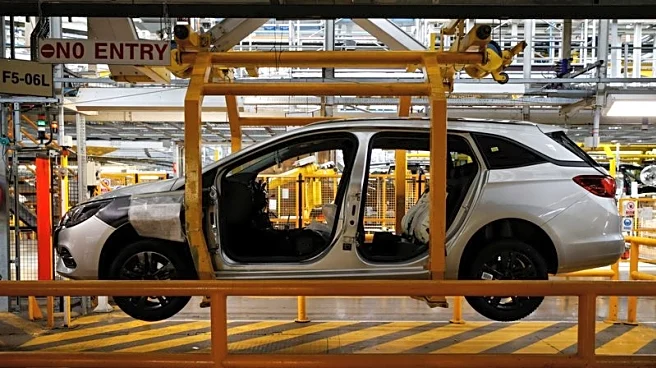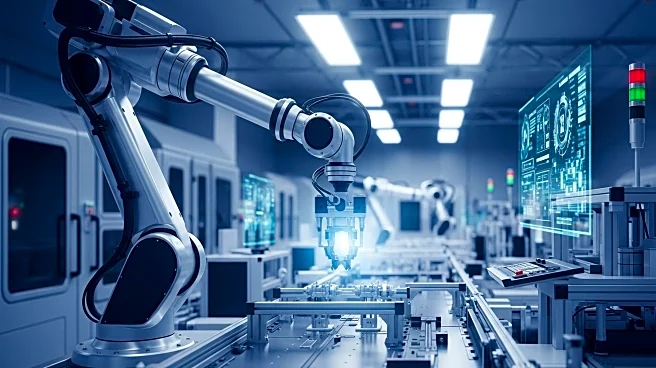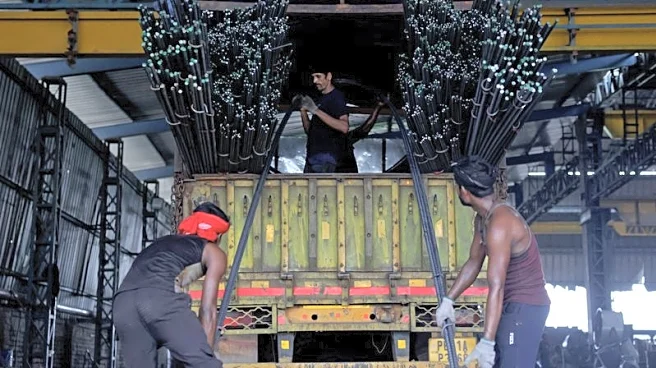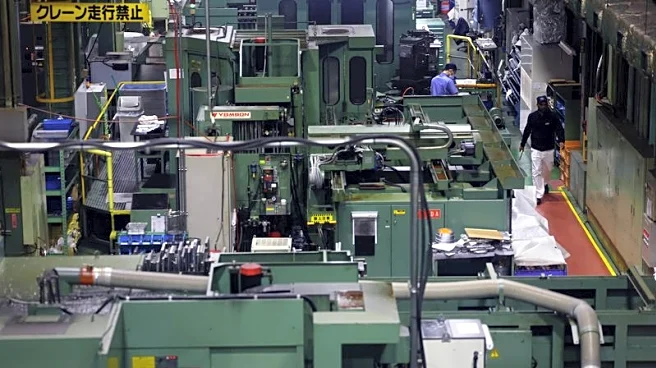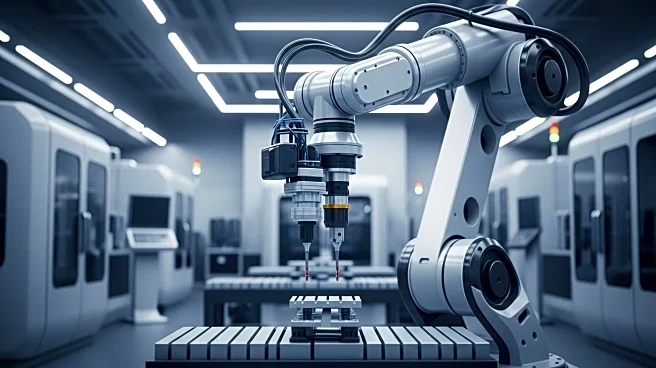What's Happening?
The manufacturing sector is experiencing a downturn, with export orders declining at one of the fastest rates in years, according to S&P Global's purchasing managers' index (PMI). The sector's activity dropped to a five-month low, with the PMI reading falling to 46.2, indicating a contraction. Factors contributing to the decline include high energy costs, tariffs, and a cyber attack on Jaguar Land Rover. Employment in the sector has also fallen for the eleventh consecutive month, impacted by increased labor costs and national insurance contributions.
Why It's Important?
The challenges facing the manufacturing sector highlight broader economic concerns, including the impact of global trade dynamics and rising costs. The decline in export orders may affect the sector's contribution to GDP and its role in driving innovation and productivity. As manufacturing accounts for a significant portion of the economy, its struggles could have long-term implications for economic growth and competitiveness. Stakeholders must address these challenges to support recovery and ensure the sector's sustainability.
What's Next?
The manufacturing sector may continue to face headwinds, with potential impacts from upcoming policy changes and economic conditions. Companies are likely to focus on cost management and efficiency improvements to navigate the challenging environment. Stakeholders should monitor developments in trade policies and energy costs, adapting strategies to mitigate risks and capitalize on opportunities for growth.
Beyond the Headlines
The sector's decline raises questions about the future of manufacturing in the context of global competition and technological advancements. As companies face pressure to innovate and adapt, discussions on workforce development and investment in new technologies may become more prevalent. Additionally, the sector's challenges may prompt considerations of environmental sustainability and the role of manufacturing in achieving net-zero goals.



